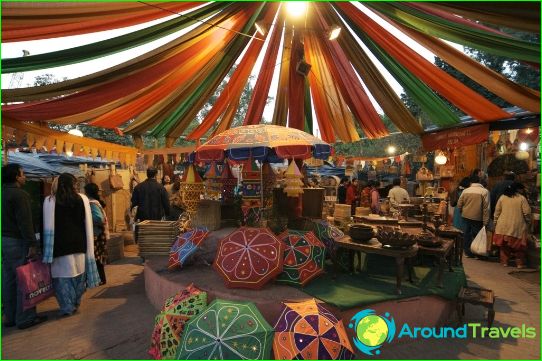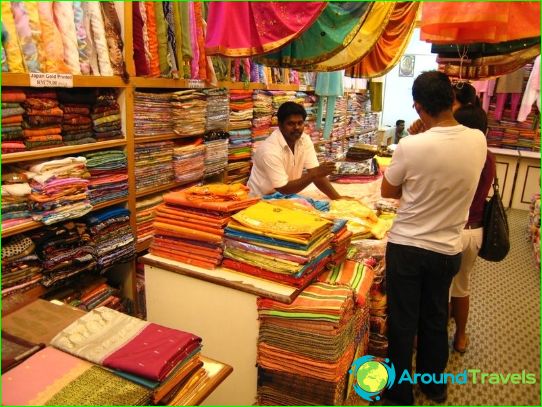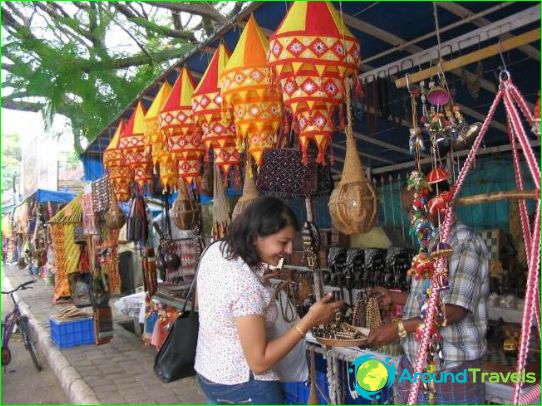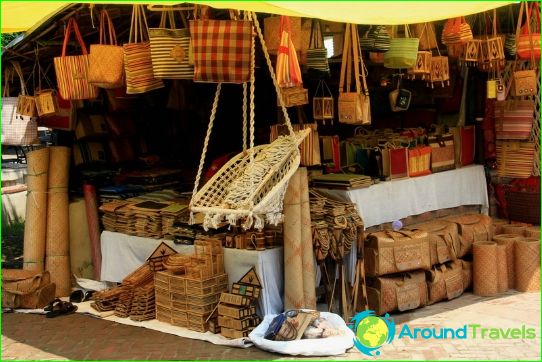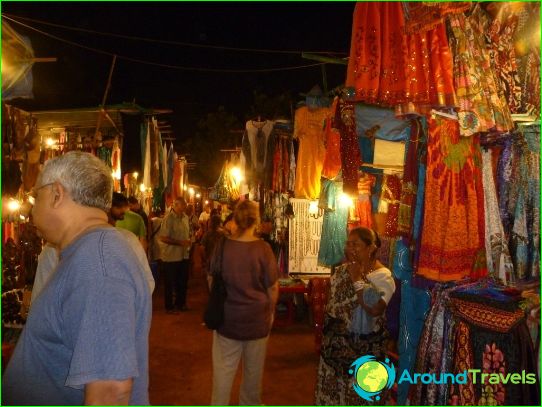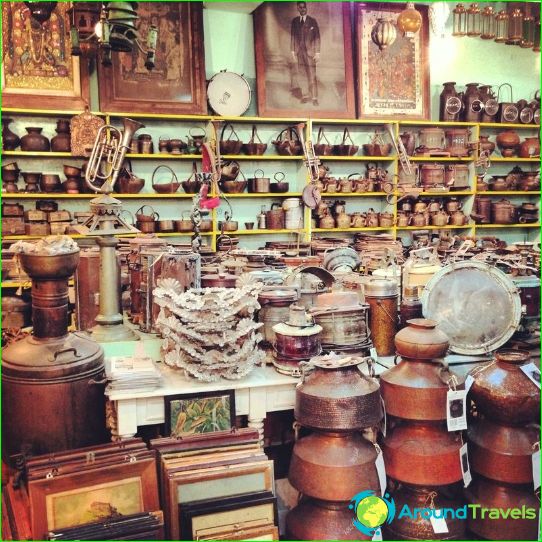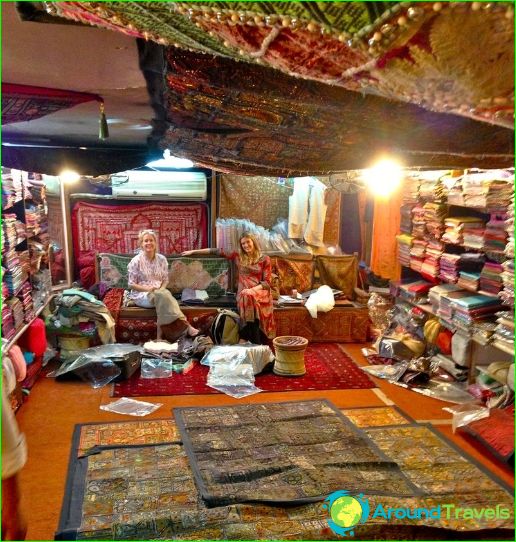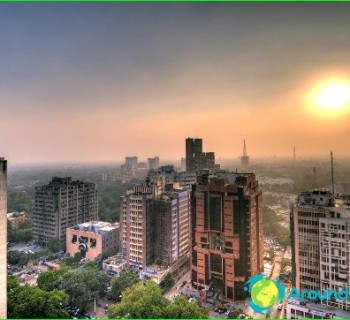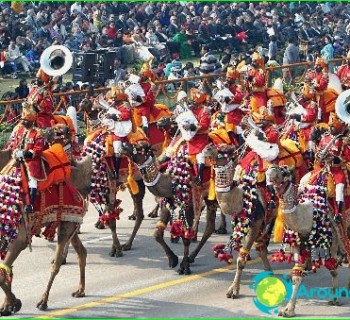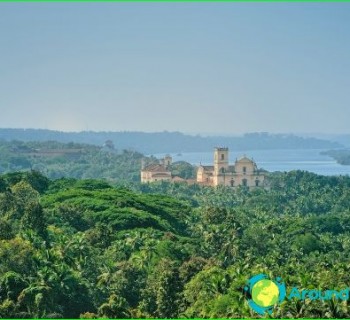Shopping in India
India is the land of tea and cinema. Country of elephants and tigers. A country of beautiful temples and picturesque resorts. A country with a rich history and ancient civilization. It combines the leisurely monks and the vibrant energy of business centers. India's unique and distinctive culture transforms shopping from a simple act of buying and selling into an introduction to a wonderful world in which antiquity is closely intertwined with modernity. And no matter what you buy, you will long remember the smell of incense in the shops and the eyes of old Hindu men - the personification of the luxury of the East and its wisdom.
In shops and in markets you need to bargain - friendly customers are happy to meet halfway, but in shopping centers the prices are fixed. The famous Indian Old Monk rum is best purchased in duty-free..
The most democratic markets are in Delhi, nevertheless, a huge number of competitors affects. You need to try to choose places closer to the city center - higher quality goods and lower prices. Chandi Chowk is a shopping street with many lanes - the oldest shopping place in the city, with each alley specializing in the sale of one particular product. There is an opportunity to purchase antiques here. The cosmopolitan Bombay differs in the same way. His «swap meet» Chor is truly a paradise for connoisseurs. Labyrinths of streets are simply littered with all sorts of exotic rarities.
By the way, Indian products are environmentally friendly. Despite the modernization, many manufacturers have not abandoned the traditional processing of raw materials, and therefore, hand-made paper, clothes, toys, dishes, shoes, furniture, carpets, even lampshades made of clay or paper are ubiquitous..
So what can you buy in India?
- Tea. Tea-making is a traditional occupation for India. It is grown in the highlands and in the valleys. Specialized shops will offer an assortment of it. Green is an order of magnitude more expensive than black. For tea, you can buy exotic orange honey collected in Cherrapunji.
- Fabrics. Cashmere is the finest wool known since the Great Silk Road. Varnasi - one of the largest centers for the production of sarees - has been famous since ancient times for its amazing brocade - silk woven with silver or gold threads. Today it is in demand in the world market not only among fashion designers, but also among leading manufacturers of expensive furniture. Marvelous silks of various finishes are produced all over the country. Some are known for bright colors, others for soft, delicate shades, but natural dyes and traditional dyeing methods are used everywhere. Very high quality cotton fabrics: bright and dense cotton - Rajasthani; thin, hot-dyed from Madras. Two years ago, cotton was banned from export for an indefinite period, but this applies to raw cotton. There should be no problems with the export of fabric. You can buy khimra everywhere - a cotton-silk blend. In the markets or in handicraft workshops, you can find unique handmade fabrics, with embroidery, decorated with beads and stones. There you can also order custom tailoring of a traditional Indian outfit. They are in stores, but already factory-made and at a lower price. Sales are ongoing.
- Furniture. Indian furniture is made in accordance with national traditions, it is of very high quality and is appreciated all over the world. It is very difficult not to succumb to the charm of carved tables, chairs or chests from Rajasthan and Gujarat, painted and inlaid objects, screens and nightstands from Kishangar, Ramgar and Shekawati, which will become a worthy decoration for any interior. They have an ancient look, a pleasant smell and wonderful energy, which has retained the warmth of the hands of the masters. Special connoisseurs even buy doors.
- Wood products. In addition to furniture, there is also a mass of carved souvenirs from fragrant tree species - Karnataka offers sandalwood, Keral and Madras - rosewood, Kashmir - Indian walnut. Figurines of elephants, Buddha figurines, jewelry boxes and caskets, bracelets and pendants and, of course, the famous Indian chess.
- Carpets. Like fabrics, carpets are striking in their variety: silk, lace, cotton, woolen, bamboo, woven, felted, wicker - from Kashmir, Rajstan, Darjeeling, Tripura and Bengal. Carpet weaving is another national pride, raised from craft to the rank of art. World museums are honored to have samples of Indian carpets.
- Decorations. Jewelery and India are inseparable. Everybody is wearing jewelry here. Even animals - elephants, horses and camels - are usually decorated with necklaces and bracelets. It's worth buying, because precious metals are much cheaper than in Russia, and much more original in design. Any big city has «gold markets». Dariba Kalan is a jewelry place in the already known Chadni Chowk. Silver jewelry is beautiful and of high quality. Rajasthan is one of the traditional centers of jewelry art. There are simpler products - with enamels, there are more expensive ones - with stones - you can even order them. The stones are unique - Indian emeralds, star rubies and topaz, diamonds and aquamarines. Pearl fishing brought worldwide fame to Hyderabad. Andhra Pradesh and Orissa are famous for filigree, and from the north of the country they bring traditional jewelry for hands and feet. Assam will offer earrings and necklaces made of soft gold, and Nagaland will offer jewelry with shells, teeth and animal claws - a kind of amulets. Traditional naravatna is an adornment with a combination of nine different stones, designed to provide you with the protection of space, protect you from illness and preserve vitality..
- Musical instruments. Favorite items for creating exotic interiors. The most popular among tourists are traditional Indian sitara and tabla. An extensive assortment of these and other instruments will be offered to you in Varnasi, in Tamil Nadu - chillums (clay pipes), and for objects of Tantric Buddhism it is better to go to the foothill regions - Ladakh, Sikkim, Dharamsala, Manali. There you will find Tibetan bells, ritual drums and shells. There you can also buy knitted socks, lambswool capes and many warm clothes made by the hands of Tibetan monks..
- Leather products. The choice is great, the quality and price are varied. Leather clothes, national shoes with beaded embroidery and inlay, traditional water vessels and saddles with stunning finishes, suitcases, bags, gloves, belts and straps, bracelets, key rings - for every taste, all this is everywhere. In any large city there are shops specializing in leather goods, an abundance of leather stuff is also in the markets.
- Incense and cosmetics. To be in India and not to bring incense - this does not happen! All cosmetics and aromatherapy products are authentic, inexpensive and sold everywhere. Essential and cosmetic oils, incense sticks and stands for them, coconut milk, various powders and essences, as well as the famous henna and basma.
You need to know that it is forbidden to export ivory, skins of reptiles and wild animals and products from them, living plants, artifacts older than 100 years, which are of historical or cultural value. Penalties for violation in the form of fines and even arrests.
